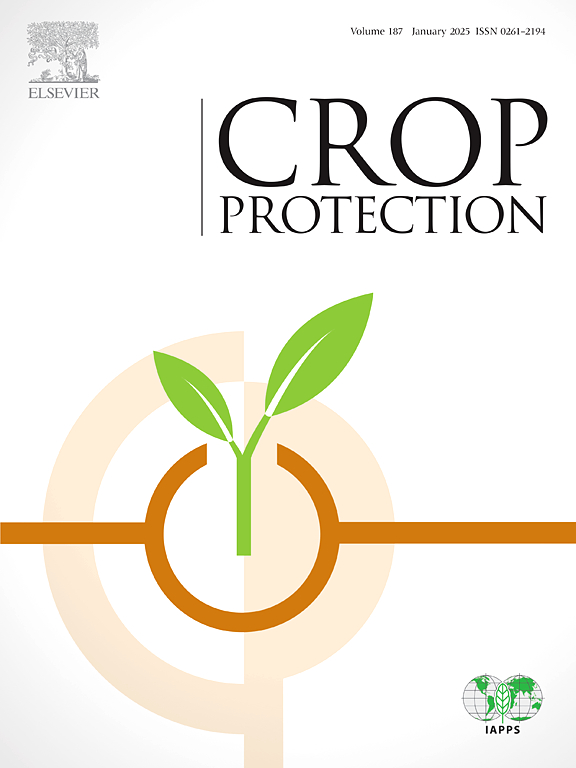Tea leaf disease recognition using attention convolutional neural network and handcrafted features
IF 2.5
2区 农林科学
Q1 AGRONOMY
引用次数: 0
Abstract
The diseases of tea leaves have a significant impact on their quality and yield, making the rapid identification of leaf diseases in tea crucial for prevention and control. We propose an LBPAttNet model, incorporating a lightweight coordinate attention mechanism into ResNet18 to enhance disease localization and reduce background interference. Furthermore, we employ the local binary patterns (LBP) algorithm to further extract local structural and textural features of tea leaf diseases, and integrate deep features to obtain a more comprehensive feature representation. Additionally, we utilize the focal loss function to alleviate the issues of class imbalance and varying difficulty levels in tea leaf disease, thereby further enhancing the accuracy of tea disease recognition. Our model achieves an accuracy of 92.78% and 98.13% on two publicly available tea disease datasets, surpassing ResNet18 by 3.84% and 2.59% respectively. Compared to traditional algorithms such as AlexNet, GoogleNet, MobileNet, VGG16, and other tea disease recognition algorithms, our model also shows significant improvements. These results highlight the superior performance and robustness of our model.基于注意卷积神经网络和手工特征的茶叶病害识别
茶叶病害对茶叶品质和产量有重大影响,因此茶叶病害的快速鉴定对防治至关重要。我们提出了一个LBPAttNet模型,在ResNet18中加入轻量级的坐标注意机制,以增强疾病定位和减少背景干扰。在此基础上,采用局部二值模式(LBP)算法进一步提取茶叶病害的局部结构和纹理特征,并整合深层特征,得到更全面的特征表示。此外,我们利用焦点损失函数缓解了茶叶病害分类不平衡和难度等级不同的问题,从而进一步提高了茶叶病害识别的准确性。我们的模型在两个公开的茶病数据集上实现了92.78%和98.13%的准确率,分别超过ResNet18 3.84%和2.59%。与传统的AlexNet、GoogleNet、MobileNet、VGG16等茶病识别算法相比,我们的模型也有明显的改进。这些结果突出了我们模型的优越性能和鲁棒性。
本文章由计算机程序翻译,如有差异,请以英文原文为准。
求助全文
约1分钟内获得全文
求助全文
来源期刊

Crop Protection
农林科学-农艺学
CiteScore
6.10
自引率
3.60%
发文量
200
审稿时长
29 days
期刊介绍:
The Editors of Crop Protection especially welcome papers describing an interdisciplinary approach showing how different control strategies can be integrated into practical pest management programs, covering high and low input agricultural systems worldwide. Crop Protection particularly emphasizes the practical aspects of control in the field and for protected crops, and includes work which may lead in the near future to more effective control. The journal does not duplicate the many existing excellent biological science journals, which deal mainly with the more fundamental aspects of plant pathology, applied zoology and weed science. Crop Protection covers all practical aspects of pest, disease and weed control, including the following topics:
-Abiotic damage-
Agronomic control methods-
Assessment of pest and disease damage-
Molecular methods for the detection and assessment of pests and diseases-
Biological control-
Biorational pesticides-
Control of animal pests of world crops-
Control of diseases of crop plants caused by microorganisms-
Control of weeds and integrated management-
Economic considerations-
Effects of plant growth regulators-
Environmental benefits of reduced pesticide use-
Environmental effects of pesticides-
Epidemiology of pests and diseases in relation to control-
GM Crops, and genetic engineering applications-
Importance and control of postharvest crop losses-
Integrated control-
Interrelationships and compatibility among different control strategies-
Invasive species as they relate to implications for crop protection-
Pesticide application methods-
Pest management-
Phytobiomes for pest and disease control-
Resistance management-
Sampling and monitoring schemes for diseases, nematodes, pests and weeds.
 求助内容:
求助内容: 应助结果提醒方式:
应助结果提醒方式:


